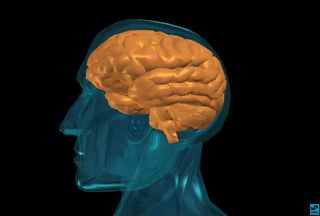New Device Reads Minds Pretty Well

Canadian researchers say they can glean simple preferences from a person's brain by shining near-infrared light into the noggin.
The study, reported in the Journal of Neural Engineering, demonstrated the ability to decode a person's preference for one of two drinks with 80 percent accuracy by measuring the intensity of near-infrared light absorbed in brain tissue, the scientists said in a statement today.
"This is the first system that decodes preference naturally from spontaneous thoughts," says Sheena Luu, a University of Toronto doctoral student in biomedical engineering who led the work under the supervision of Tom Chau, a specialist in pediatric rehab engineering at the university's Bloorview Kids Rehab center.
Near-infrared light has a longer wavelength than visible light. In the beginning of the study, nine adult volunteers rated eight drinks on a scale of one to five.
Then, wearing a headband fitted with fiber optics that emit light into the pre-frontal cortex of the brain, the subjects were shown two drinks on a computer monitor, one after the other, and asked to make a mental decision about which they liked more.
"When your brain is active, the oxygen in your blood increases and depending on the concentration, it absorbs more or less light," Luu said. "In some people, their brains are more active when they don't like something, and in some people they're more active when they do like something."
After teaching the computer to recognize the unique pattern of brain activity associated with preference for each subject, the researchers accurately predicted which drink the participants liked best 80 percent of the time.
Sign up for the Live Science daily newsletter now
Get the world’s most fascinating discoveries delivered straight to your inbox.
Other research has suggested brain activity could be monitored before decisions are made, perhaps with a mind-reading hat that would predict what we'll do.
The goal of the new research is ultimately to open the world of choice to children who can't speak or move.
- Computer to Read Minds
- The Enduring Mystery of Light
- All About the Brain
Most Popular


